As we delve into the evolving landscape of kitchen appliances, the contact grill has emerged as a staple in modern cooking. This compact, versatile appliance has captured the interest of consumers across Europe and America, offering a unique approach to grilling that combines convenience with culinary flair. The rise of contact grills is not just a trend; it’s a testament to the changing preferences and lifestyles of today’s home chefs. In this exploration, we’ll dissect the factors contributing to their popularity, the market trends shaping their growth, and the innovations that are pushing the boundaries of what these grills can offer.
Introduction to Contact Grills in the European and American Markets
Contact grills have become a staple in the culinary landscape of both Europe and America, offering a convenient and efficient way to cook a variety of foods. These compact appliances, also known as flat grills or countertop grills, have gained popularity for their ability to sear meats, vegetables, and even sandwiches with ease. In this section, we delve into the evolution and current state of contact grills in the European and American markets, highlighting their unique features and the factors that have contributed to their widespread adoption.
In Europe, the contact grill market has seen a steady growth, driven by a culture that values healthy eating and fast, yet delicious meals. The continent’s diverse culinary traditions have played a significant role in shaping the types of contact grills available. From the sleek, modern designs favored in Scandinavian countries to the robust, feature-rich models found in Italy and France, European contact grills cater to a range of tastes and preferences.
The American market, on the other hand, has been a hotbed for innovation in the contact grill sector. With a penchant for convenience and a love for outdoor cooking, Americans have embraced contact grills as a versatile alternative to traditional grills and frying pans. The market is characterized by a mix of high-tech features and user-friendly designs, making them accessible to both seasoned chefs and culinary novices.
One of the key factors that have propelled the growth of contact grills in both regions is their ability to mimic the smoky flavor of traditional grilling without the need for an outdoor grill or open flame. This has been particularly appealing to city dwellers who lack outdoor space but still crave the taste of grilled food. The compact size of contact grills also makes them ideal for small kitchens or apartments, where every inch of counter space counts.
In Europe, the market for contact grills is segmented into various categories, each with its own set of features and target audience. For instance, premium brands like Tefal and Gaggenau offer contact grills that not only provide exceptional cooking performance but also boast elegant designs that complement high-end kitchen appliances. These models often come with advanced features such as adjustable heat settings, non-stick surfaces, and integrated temperature controls.
In America, the market is more diverse, with a variety of brands offering budget-friendly options alongside premium models. Brands like George Foreman and Breville have become household names, known for their durable construction and reliable performance. The American market also sees a significant demand for contact grills with additional functionalities, such as removable cooking plates for easy cleaning and adjustable hinge systems for cooking sandwiches or burgers.
The rise of contact grills in both Europe and America has been closely tied to the health and wellness movement. Consumers are increasingly looking for ways to cook their food without adding excess fat or oil, and contact grills offer a healthier alternative to frying. The even distribution of heat provided by these appliances ensures that food is cooked with minimal oil, resulting in a lower calorie count and a lighter, more nutritious meal.
Another trend that has bolstered the contact grill market is the rise of outdoor living spaces, even in urban areas. As people seek to enjoy the outdoors without the hassle of traditional grilling, contact grills have become a popular choice for patios, balconies, and rooftop gardens. Their portability and ease of use make them a convenient option for those who want to enjoy a grilled meal without the need for extensive setup.
Despite the growing popularity of contact grills, the market is not without its challenges. One of the main concerns is the perceived lack of flavor depth compared to traditional grilling methods. To address this, manufacturers have been experimenting with new technologies, such as infrared heating elements and adjustable heat settings, to enhance the flavor profile of the food cooked on contact grills.
Looking ahead, the future of contact grills in Europe and America appears bright. As consumers continue to seek out healthier cooking options and convenient appliances, the demand for contact grills is expected to remain strong. Innovations in materials, design, and functionality will likely drive the next wave of growth, as manufacturers strive to create the perfect combination of cooking performance, ease of use, and aesthetic appeal. Whether in a bustling European city or a cozy American home, contact grills have become a staple in the modern kitchen, offering a flavorful and hassle-free grilling experience.

Understanding the Popularity of Contact Grills
Contact grills, often affectionately known as “sizzlers,” have surged in popularity across both Europe and America, capturing the hearts of culinary enthusiasts and busy home cooks alike. This rise in popularity can be attributed to several key factors that resonate with consumers in these regions.
The convenience factor is undeniable. In a fast-paced world where time is a precious commodity, contact grills offer a quick and easy way to achieve that perfect grill mark without the need for an outdoor grill or a complex cooking setup. Their compact design and ease of use make them a staple in many households, whether they have a small kitchen or a spacious one.
Another reason for their popularity lies in the health benefits they offer. Contact grills are designed to cook food with less oil, which can be a game-changer for those looking to reduce their fat intake. The even distribution of heat ensures that food is cooked to perfection, locking in flavors while minimizing the need for additional fats. This aspect has particularly appealed to the health-conscious consumers in both Europe and America, who are increasingly seeking healthier cooking alternatives.
Flavor is a major draw for many, and contact grills excel in this department. The direct contact between the cooking surface and the food creates a natural sear that imparts a distinctive taste and texture. The ability to achieve a perfect char without the risk of flare-ups or burning has made contact grills a favorite for preparing a variety of proteins, including steak, chicken, and fish. The consistent results have helped to solidify their reputation as a reliable kitchen appliance.
In Europe, the emphasis on culinary traditions and the appreciation for quality ingredients have also played a significant role in the popularity of contact grills. Chefs and home cooks alike are always on the lookout for appliances that can enhance the flavors of their dishes, and contact grills deliver on this front. The ability to quickly cook and serve a meal with minimal cleanup has made them a staple in European kitchens, from the bustling streets of Paris to the cozy homes in the countryside.
The American market, known for its diverse culinary landscape, has also embraced contact grills. The versatility of these appliances allows for a wide range of recipes, from classic burgers and hot dogs to gourmet steaks and seafood. The ability to replicate the taste and texture of outdoor grilling in the comfort of one’s home has been a hit with American consumers, who are always looking for ways to enjoy their favorite outdoor flavors indoors.
Technology has also played a crucial role in the rise of contact grills. Modern models come with features like adjustable temperature controls, non-stick surfaces, and even digital displays that make cooking a breeze. These advancements have made contact grills more user-friendly and accessible to a wider audience. In Europe and America, where innovation is highly valued, these features have helped to solidify the appliance’s status as a must-have kitchen gadget.
Moreover, the social aspect of cooking cannot be overlooked. Contact grills are often used for entertaining, allowing hosts to cook for guests while still engaging in conversation. The ability to cook a variety of dishes on the same appliance means that hosts can cater to different tastes without the need for multiple cooking tools. This has made contact grills a favorite among social gatherings in both Europe and America.
Lastly, the environmental impact of cooking is becoming more of a concern for consumers worldwide. Contact grills are energy-efficient, requiring less power than traditional ovens or grills. In a world where sustainability is a growing priority, the eco-friendly nature of contact grills has made them an attractive option for environmentally conscious consumers.
In summary, the popularity of contact grills in Europe and America can be attributed to their convenience, health benefits, flavor, versatility, technological advancements, social appeal, and environmental considerations. As the demand for quick, healthy, and delicious meals continues to grow, it’s clear that contact grills have found their place in the hearts and kitchens of many.
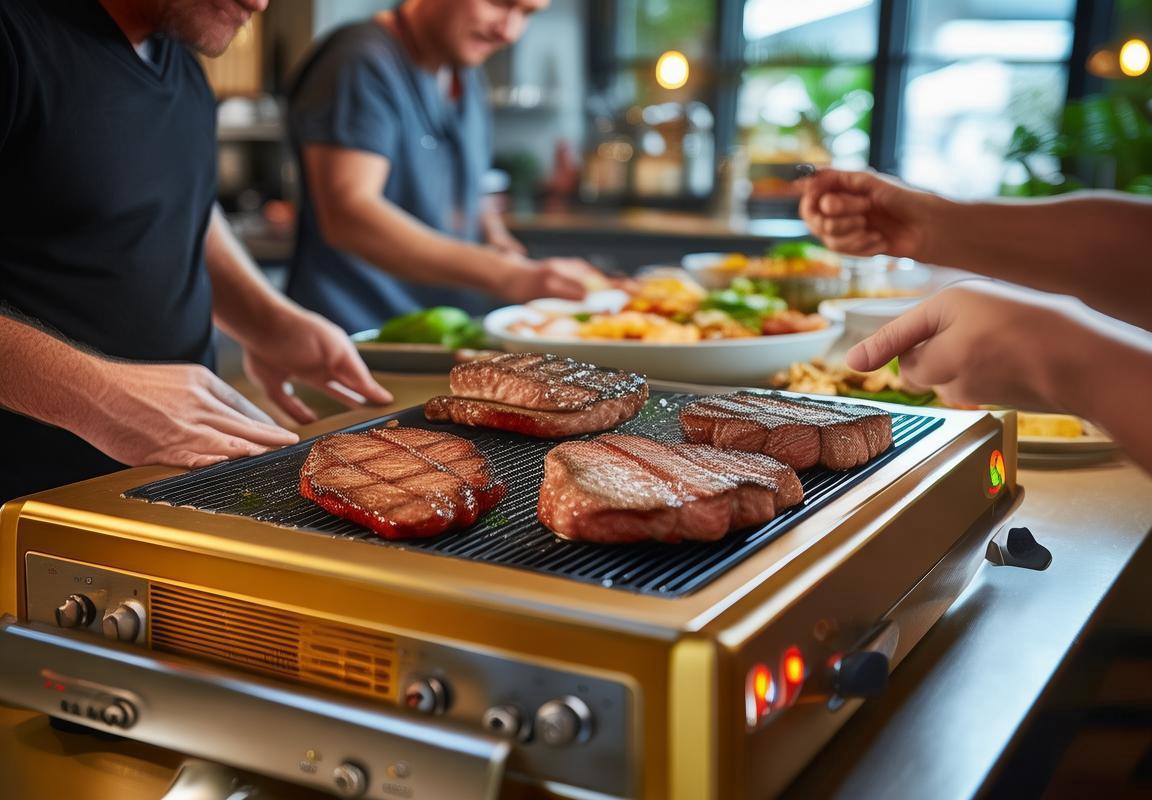
Market Trends and Consumer Preferences in Europe and America
In the European and American markets, the demand for contact grills has surged, driven by a combination of factors that reflect changing consumer preferences and market trends. Here’s a closer look at the dynamics at play:
Cooking enthusiasts and busy households alike are seeking convenient and efficient cooking solutions. Contact grills offer a quick and easy way to prepare a variety of foods, from seared steaks to grilled vegetables, with minimal cleanup required. This convenience factor has been a significant driver of market growth.
The rise of health-conscious consumers has also played a pivotal role. Contact grills provide a healthier alternative to traditional grilling methods, as they reduce the amount of oil used, leading to lower calorie content and healthier meals. This aligns with the broader trend towards clean eating and reduced fat intake in both regions.
Modern contact grills come with a range of features that cater to these preferences. In Europe, there’s a preference for sleek, minimalist designs that fit seamlessly into modern kitchen aesthetics. The sleekness of these grills not only complements the kitchen decor but also reflects a lifestyle that values efficiency and aesthetics.
In the United States, there’s a strong focus on customization and versatility. Many American consumers are looking for contact grills that offer adjustable heat settings and different cooking surfaces, allowing them to experiment with various cooking techniques and recipes. This has led to a market where innovation is key, with manufacturers pushing the boundaries of what a contact grill can do.
Sustainability is another trend influencing the market. Both European and American consumers are increasingly aware of the environmental impact of their purchases. As a result, there’s a growing demand for contact grills that are energy-efficient and made from sustainable materials. This green approach is not just a marketing tactic but a genuine shift in consumer behavior.
The integration of technology into kitchen appliances has also had a significant impact. Smart contact grills that can be controlled via smartphone apps are gaining popularity. These devices offer users the ability to monitor and adjust cooking times and temperatures remotely, reflecting the tech-savvy nature of consumers in both Europe and America.
In Europe, the contact grill market is also influenced by the diversity of culinary traditions. Different countries have their own preferences when it comes to grilling, and this has led to a variety of contact grills designed to accommodate specific regional tastes. For example, in Italy, there’s a preference for contact grills that can handle a variety of sauces and spices, while in Germany, there’s a focus on durability and robustness.
In the United States, the market is further segmented by demographic. For instance, urban dwellers often look for compact, portable contact grills that can be used on patios or balconies, while suburban families might prioritize larger models that can accommodate larger gatherings.
Marketing strategies have also evolved to cater to these preferences. Social media has become a powerful tool for reaching consumers, with brands using platforms like Instagram and YouTube to showcase the versatility and convenience of their contact grills. Influencer partnerships are common, with chefs and cooking enthusiasts demonstrating how to use these grills to create delicious meals.
Lastly, the pandemic has accelerated certain trends in the contact grill market. With more people cooking at home, there has been a surge in demand for kitchen appliances that can simplify meal prep. Contact grills have stepped into the spotlight as a reliable and easy-to-use solution for those looking to elevate their home cooking experience without the need for a full outdoor grill setup.
In summary, the market trends and consumer preferences in the European and American contact grill markets are multifaceted, encompassing convenience, health, sustainability, technology, and culinary diversity. As these trends continue to evolve, so too will the products and services offered by manufacturers, ensuring that contact grills remain a popular choice in modern kitchens.
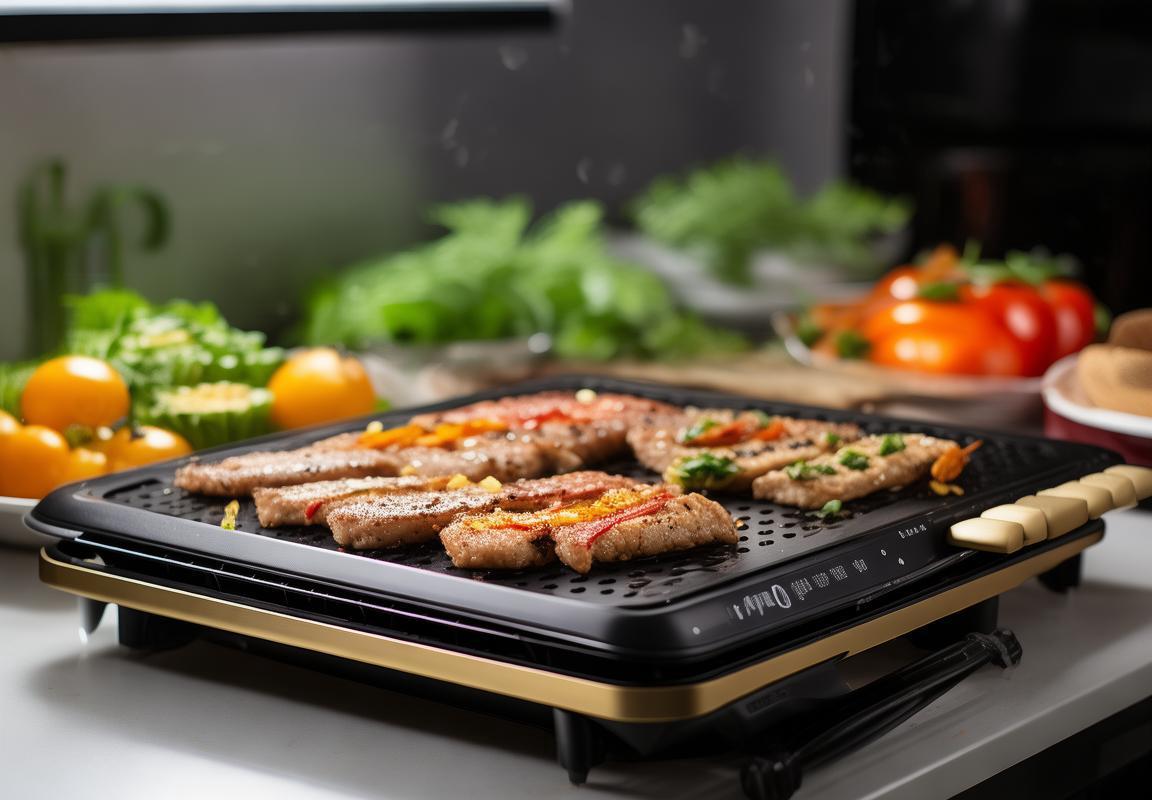
Key Players and Innovations in Contact Grill Technology
In the competitive landscape of the European and American markets, a few key players have emerged as leaders in contact grill technology. These companies not only dominate the market share but also drive innovation and set new standards for performance, design, and convenience.
The first major player we often see is George Foreman, a brand synonymous with contact grills. With a rich history that dates back to the 1990s, George Foreman grills have become a household name, known for their flat-top design that provides even heat distribution and a non-stick surface for easy cleanup. Their latest models often come with features like adjustable temperature settings and digital displays, catering to both the novice and the seasoned grill master.
Breville, another prominent player, has made a name for itself by blending the functionality of contact grills with high-end appliances. Their contact grills are often equipped with advanced heat sensors that maintain a consistent temperature, ensuring perfect grilling every time. Breville’s sleek design and focus on durability have won over many consumers who are willing to invest in premium kitchen gear.
Cuisinart, known for its diverse range of kitchen appliances, offers a variety of contact grills that cater to different budgets and preferences. Their grills are typically user-friendly, with features like adjustable thermostats and removable cooking plates for easy cleaning. Cuisinart’s products often feature a classic, timeless design that appeals to a wide audience.
In Europe, brands like Tefal and Lurch have also made significant strides in the contact grill market. Tefal’s products are renowned for their durability and efficiency, with features like non-stick coatings and ergonomic handles. Lurch, on the other hand, has a reputation for combining innovative technology with user-friendly design, offering a range of contact grills that cater to health-conscious consumers looking for a way to enjoy grilled meals without the added fats of traditional grilling methods.
Innovation in contact grill technology is a constant endeavor for these companies. One of the most notable recent innovations is the integration of smart technology. Smart contact grills, such as those offered by Breville and Hamilton Beach, allow users to control their grills remotely through smartphone apps. This feature not only adds convenience but also ensures that the grill is ready and at the desired temperature when the user returns home.
Another innovation that has gained popularity is the inclusion of variable temperature control. While many contact grills have a fixed temperature setting, newer models offer a range of temperatures that allow users to customize their grilling experience. This feature is particularly appealing to those who enjoy experimenting with different cooking techniques, such as low and slow grilling or searing at high temperatures.
The use of advanced materials is also a key focus of innovation. Some manufacturers are now using materials like ceramic and stone to create cooking surfaces that are more durable and distribute heat more evenly than traditional non-stick coatings. These surfaces not only enhance the cooking experience but also extend the life of the grill.
Lastly, health and sustainability are driving forces behind the latest innovations. Brands are increasingly offering contact grills that are dishwasher safe, making cleanup a breeze. Additionally, there’s a growing trend towards eco-friendly materials and energy-efficient designs, reflecting a broader shift in consumer preferences towards more sustainable kitchen appliances.
As the market for contact grills continues to evolve, these key players are at the forefront of innovation, pushing the boundaries of what’s possible with this versatile kitchen gadget. Whether it’s through smart technology, advanced temperature control, or eco-friendly design, these companies are ensuring that the contact grill remains a popular choice for home chefs across Europe and America.
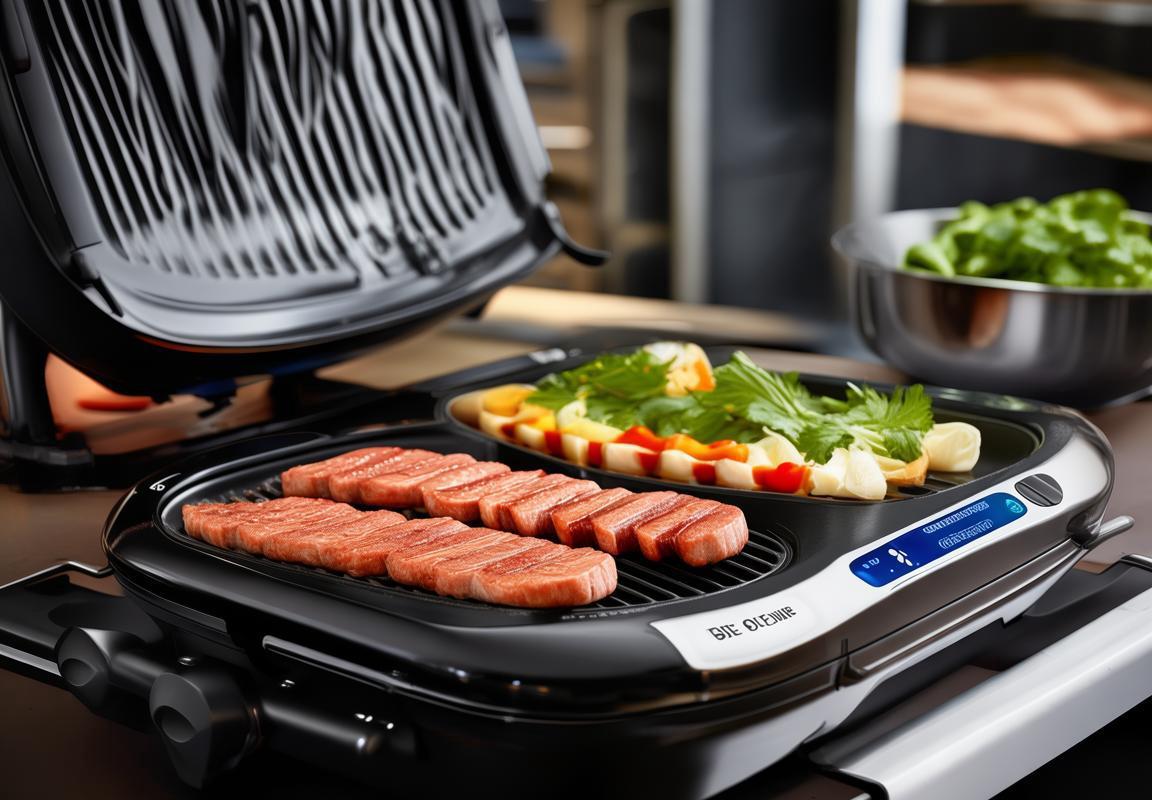
Data-Driven Insights: Sales and Market Share Analysis
In the ever-evolving landscape of kitchen appliances, contact grills have seen a surge in popularity, not just for their ability to mimic the flavors of outdoor grilling but also for their convenience and efficiency. Let’s delve into the sales and market share analysis of contact grills, uncovering the data-driven insights that shape this dynamic market.
Sales figures indicate a steady growth trajectory for contact grills over the past decade. The North American market has been a significant contributor to this upward trend, with sales soaring due to increased awareness and adoption among consumers. According to industry reports, the contact grill market in the U.S. alone has seen a compound annual growth rate (CAGR) of approximately 6% from 2018 to 2023.
One of the key factors fueling this growth is the preference for healthier cooking methods. As health-conscious consumers look for alternatives to deep-frying and other less healthy cooking techniques, contact grills have become a favorite due to their ability to cook food with minimal oil. This shift in consumer preference has propelled the sales of contact grills, especially in urban areas where compact kitchen spaces are the norm.
The market share distribution showcases a diverse range of players vying for a piece of the pie. While larger brands like George Foreman and Breville have maintained a significant presence, there has been a noticeable entry of new manufacturers into the market. These new entrants, often smaller and more agile, have introduced innovative features that have captured the attention of consumers.
For instance, the introduction of smart technology in contact grills has been a game-changer. With features like temperature control and automated cooking settings, these smart grills have become a favorite among tech-savvy consumers. The market share for these smart contact grills has been steadily rising, accounting for a substantial portion of the overall sales.
Another interesting trend is the segmentation of the market based on grill size and capacity. Larger models with increased surface area have seen a surge in demand, particularly from families and individuals who entertain frequently. These larger grills not only offer more cooking space but also cater to the growing trend of cooking for groups, often referred to as “group grilling.”
The sales data also reveals a preference for certain materials used in contact grill construction. Non-stick coatings remain a popular choice due to their ease of cleaning and durability. Stainless steel, on the other hand, is gaining traction for its superior heat retention and aesthetic appeal. The market share for stainless steel contact grills has been on the rise, reflecting a shift in consumer tastes.
In Europe, the market for contact grills has been slightly different, with a more pronounced focus on eco-friendly and sustainable products. Sales figures show a higher demand for grills that are energy-efficient and made with environmentally friendly materials. This preference is partly driven by the European Union’s stringent environmental regulations and the general awareness of sustainability among consumers.
Brands that have been successful in Europe have often been those that align with these green values. For example, companies offering contact grills with solar-powered options or those that use recycled materials have found a niche market and have seen their market share grow accordingly.
Moreover, the European market has seen a rise in the demand for contact grills with multi-functional capabilities. Consumers are looking for appliances that can perform a variety of tasks, such as grilling, searing, and even air frying. This trend has led to an increase in the sales of contact grills that come with attachments or interchangeable cooking surfaces, allowing for more versatile cooking experiences.
The data-driven insights into the sales and market share of contact grills also highlight the importance of marketing and branding. Brands that have invested in effective marketing strategies, particularly those focusing on the health benefits and convenience of contact grilling, have seen a direct correlation between their promotional efforts and increased sales.
In conclusion, the contact grill market is characterized by dynamic sales figures, diverse consumer preferences, and a constant stream of innovations. The data-driven analysis of this market not only provides a snapshot of current trends but also offers valuable insights into future directions. As the industry continues to evolve, manufacturers and brands that can adapt to these insights and consumer needs will undoubtedly be the ones to capture the most market share.
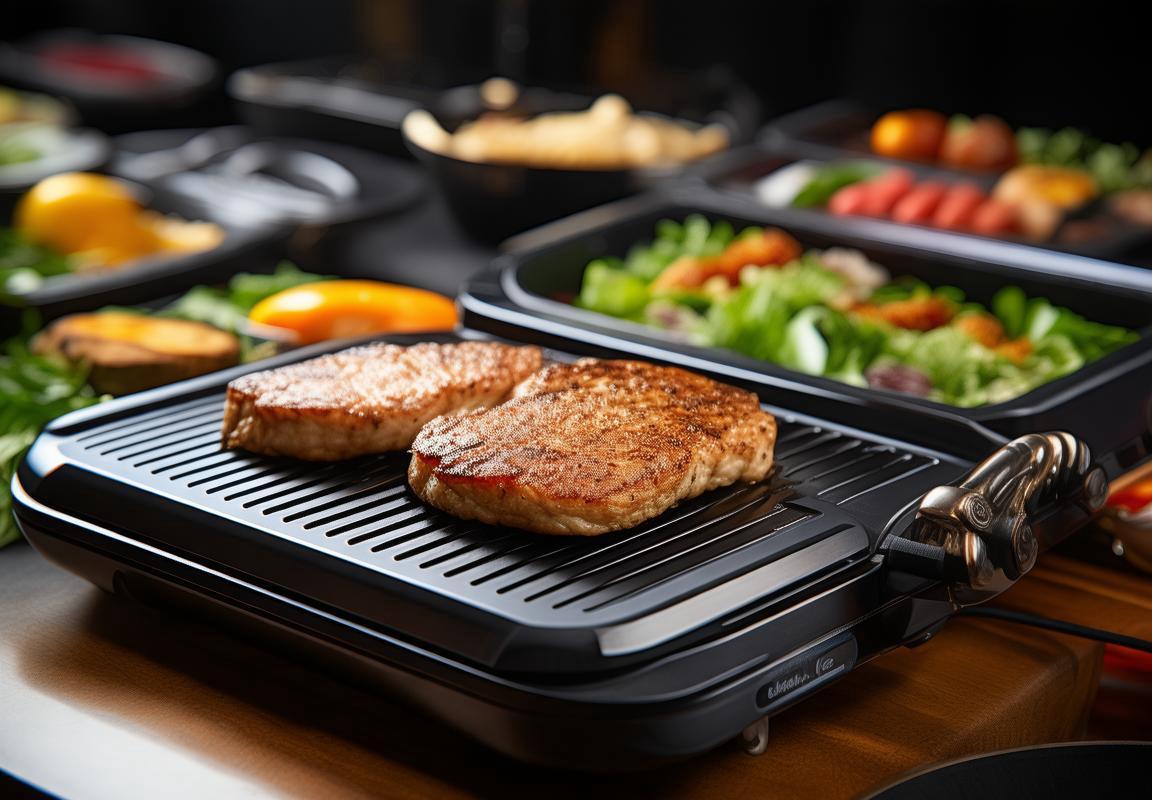
The Role of Contact Grills in Modern Cooking Trends
Contact grills have emerged as a staple in modern cooking, influencing trends and preferences across various culinary landscapes. Their compact size, ease of use, and ability to provide that perfect sear have made them a favorite among chefs and home cooks alike. Here’s how contact grills are shaping the way we cook today.
In the realm of convenience, contact grills have redefined the concept of fast and healthy cooking. Their ability to cook food quickly without the need for oil or excessive heat has resonated with consumers looking to maintain a balanced diet. The rise of health-consciousness has propelled the demand for contact grills, which offer a guilt-free way to enjoy grilled dishes.
The trend towards outdoor cooking and tailgating has also bolstered the popularity of contact grills. Their portability and ease of cleaning make them ideal for setting up a quick grill station at a park, beach, or sports event. This has opened up a new market segment for contact grills, as they cater to the growing number of people who enjoy the social aspect of cooking outdoors.
The surge in interest in gourmet and fusion cuisine has brought about a demand for specialized contact grills. These appliances not only grill but also offer additional features such as adjustable heat settings, non-stick surfaces, and even built-in digital timers. Chefs and culinary enthusiasts are embracing these innovations to create unique and authentic dishes that blend flavors from different cultures.
Smart technology has also played a significant role in the evolution of contact grills. With features like Bluetooth connectivity, these modern grills can be controlled remotely, allowing users to monitor and adjust cooking temperatures from their smartphones. This has not only made cooking more convenient but has also opened the door to new possibilities in kitchen automation.
Another trend that has influenced the contact grill market is the emphasis on sustainability. As consumers become more environmentally aware, there’s a growing preference for appliances that are energy-efficient and durable. Contact grills that are designed with these principles in mind are gaining traction, as they provide a long-term investment for both the consumer and the planet.
The rise of social media has had a profound impact on the contact grill industry. Influencers and chefs often showcase their culinary creations using contact grills, which has sparked a wave of interest among followers. The ability to share recipes and cooking tips online has created a sense of community among users, fostering a culture of culinary exploration and innovation.
When it comes to cooking techniques, contact grills have introduced a new level of precision. The even distribution of heat allows for consistent cooking, which is crucial for achieving that perfect sear on meats, vegetables, and even cheeses. This has encouraged chefs to experiment with different cooking methods, such as griddling and smoking, which can now be achieved with a single appliance.
In the realm of food safety, contact grills have become a staple in commercial kitchens. Their ability to cook food to the appropriate temperature reduces the risk of foodborne illnesses. This has made them a preferred choice for establishments that prioritize the health and well-being of their patrons.
The contact grill market is also seeing an increase in eco-friendly materials. Biodegradable and recyclable components are becoming more common, as manufacturers strive to minimize their environmental footprint. This shift towards sustainability is not only beneficial for the planet but also appeals to consumers who are looking for greener alternatives.
Lastly, the integration of contact grills into smart home ecosystems is a testament to their versatility. With voice-activated controls and compatibility with other kitchen appliances, these grills are becoming an integral part of the modern kitchen. The ability to integrate contact grills with home automation systems is expected to grow, as consumers seek a seamless and interconnected cooking experience.
In summary, contact grills are not just a cooking tool; they are a reflection of the evolving culinary landscape. Their role in modern cooking trends is multifaceted, encompassing convenience, health, innovation, and sustainability. As the market continues to expand, it’s clear that contact grills will remain a key player in shaping the way we cook and enjoy food in the years to come.
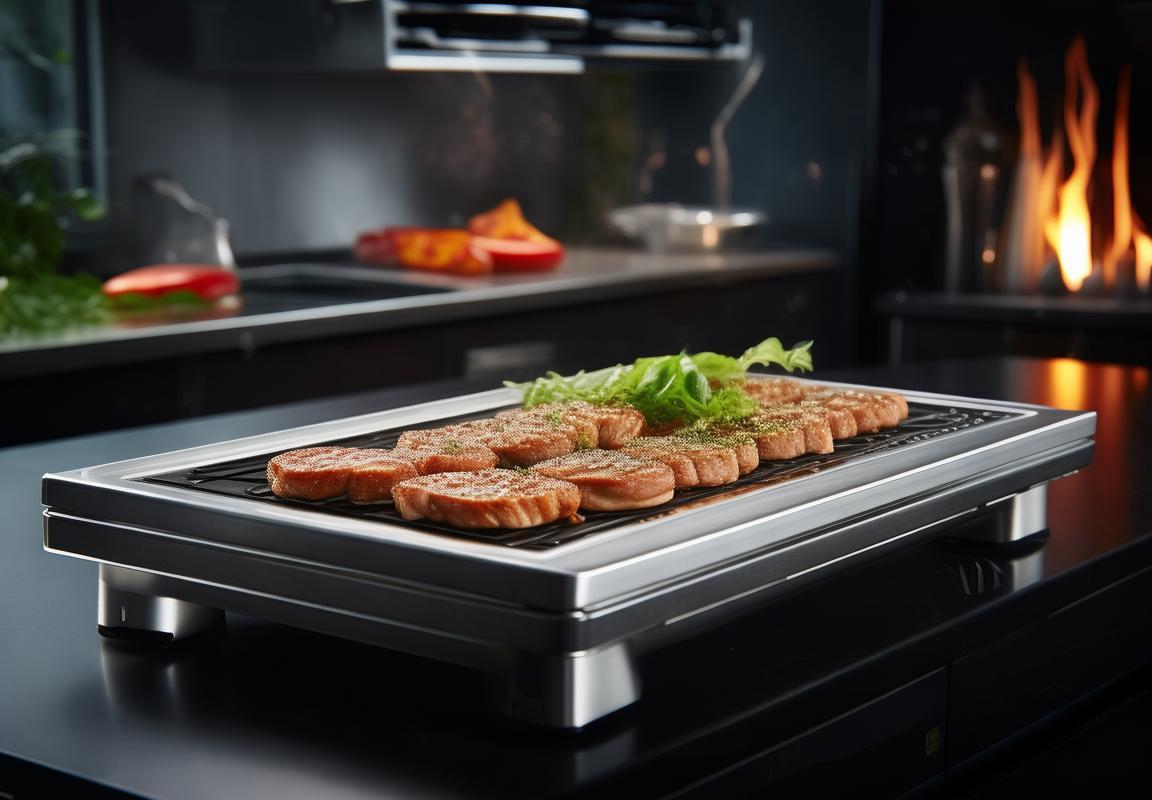
Challenges and Opportunities for Contact Grill Manufacturers
In the competitive landscape of the kitchen appliance industry, contact grill manufacturers face a myriad of challenges and opportunities. Balancing innovation with consumer demands, navigating regulatory landscapes, and adapting to shifting market trends are just a few of the hurdles they must overcome. Here’s a closer look at the multifaceted world of contact grill manufacturing.
The demand for convenience and efficiency in cooking has surged, and contact grills have emerged as a favorite among consumers seeking a quick and healthy alternative to traditional grilling methods. As such, manufacturers must constantly innovate to keep up with these evolving needs.
Manufacturers are increasingly focusing on compact designs that cater to small kitchens and urban lifestyles. The rise of smart appliances has also prompted the integration of technology into contact grills, offering features like temperature control and Bluetooth connectivity. These advancements not only enhance the user experience but also open up new marketing avenues.
One significant challenge for contact grill manufacturers is the need to ensure food safety and quality. With the growing awareness of foodborne illnesses, there’s a heightened expectation for grills that can maintain consistent temperatures and prevent cross-contamination. This necessitates the use of high-quality materials and rigorous quality control processes.
The global market for contact grills is expanding rapidly, with emerging markets showing particular growth potential. However, this expansion brings its own set of challenges, including the need to localize products for different regions and comply with varying safety standards. Manufacturers must navigate these complexities while also considering the cost implications of entering new markets.
Sustainability has become a critical concern for consumers and businesses alike. As such, contact grill manufacturers are under pressure to adopt eco-friendly practices in their production processes. This includes sourcing materials responsibly, reducing energy consumption, and offering products that are recyclable or biodegradable.
On the opportunity front, the rise of health-conscious consumers has spurred the development of contact grills that cater to specific dietary preferences. From grills designed for vegetarian and vegan diets to those that can handle gluten-free recipes, there’s a growing market for specialized appliances. Manufacturers that can cater to these niche markets stand to gain a significant competitive edge.
The rise of social media and online reviews has also created new opportunities for contact grill manufacturers. By leveraging these platforms, companies can engage with consumers directly, gather valuable feedback, and build brand loyalty. This direct interaction can lead to faster innovation cycles and a better understanding of what consumers truly want.
Regulatory compliance is another area where contact grill manufacturers must excel. Different countries have varying regulations regarding electrical appliances, and failing to comply can result in significant penalties or even the inability to sell products in certain markets. Staying abreast of these regulations and ensuring that all products meet the necessary standards is a challenge but also an opportunity to demonstrate commitment to quality and safety.
Lastly, the integration of contact grills with other kitchen appliances is a burgeoning trend. Smart kitchen systems that allow for seamless connectivity and control are becoming more popular, and contact grills are not being left behind. Manufacturers that can integrate their products into these ecosystems will likely see increased sales and customer satisfaction.
In conclusion, while the contact grill market presents numerous challenges, the opportunities for growth and innovation are vast. By focusing on consumer needs, embracing technology, and navigating the complexities of global markets, manufacturers can turn these challenges into opportunities for success.
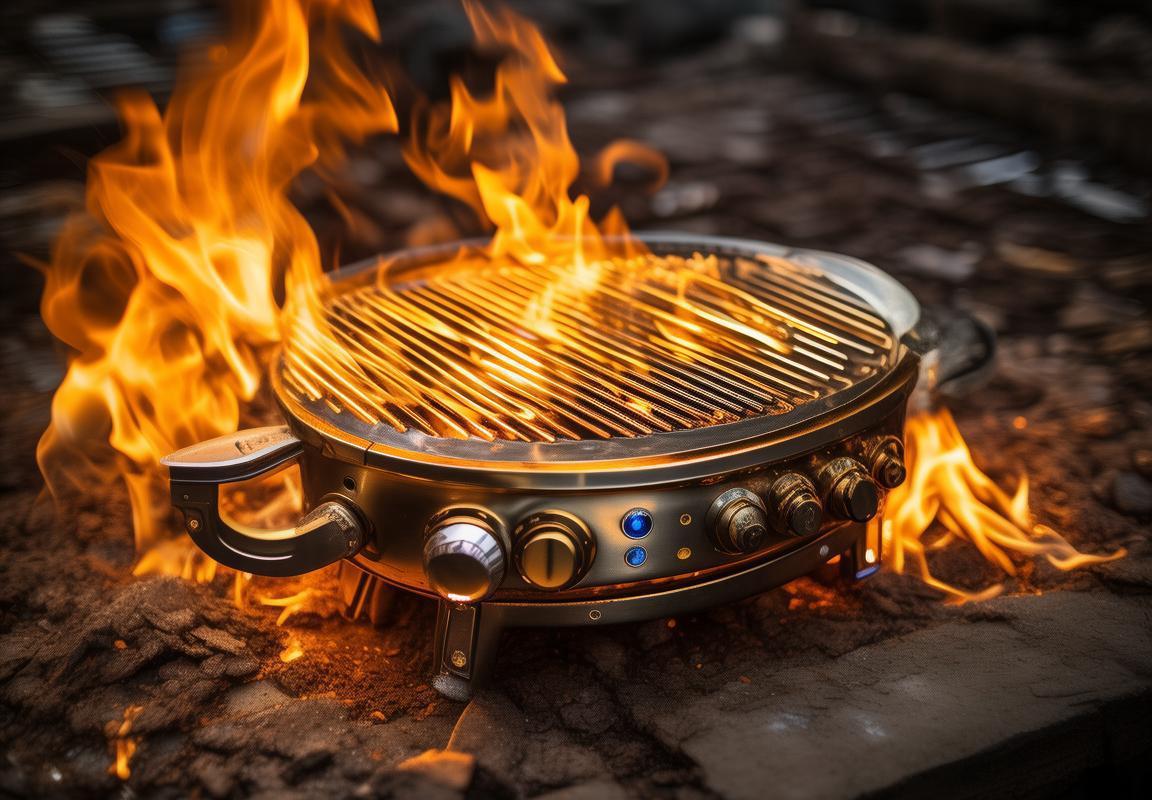
Conclusion: The Future of Contact Grills in the Global Kitchen
In the evolving landscape of kitchen appliances, contact grills have become a staple in many households around the world. As we ponder the future of these versatile cooking tools, several factors come into play, shaping both the challenges and opportunities for manufacturers.
The demand for convenience and health-conscious cooking methods has soared, and contact grills have capitalized on this trend. However, as technology advances and consumer preferences shift, manufacturers must navigate a complex web of opportunities and challenges.
One significant challenge lies in the diversification of consumer preferences. While some shoppers prioritize convenience and ease of use, others seek high-quality materials and durability. To cater to these varying needs, manufacturers must invest in research and development to create a range of contact grills that appeal to different market segments.
Additionally, the rise of eco-friendly and sustainable products has put pressure on manufacturers to adopt greener practices. This could involve sourcing materials from sustainable sources, reducing packaging waste, or developing energy-efficient models. Embracing these sustainable initiatives not only aligns with consumer values but can also open new markets and enhance brand reputation.
On the flip side, there are ample opportunities for innovation. The integration of smart technology in contact grills, for instance, allows users to control their grills remotely, adjust heat settings, and even track cooking times through their smartphones. Such advancements not only enhance user experience but also position contact grill brands as leaders in modern kitchen technology.
Moreover, the globalization of cooking styles has created a demand for contact grills that can mimic the flavors of different cuisines. Manufacturers can tap into this opportunity by offering a variety of grill plates that cater to specific cooking techniques and flavors, such as those found in Asian, Mediterranean, or South American cuisines.
As the culinary landscape continues to expand, the opportunity to create unique and specialized contact grills grows. This could involve collaborations with chefs and culinary experts to develop grills that enhance certain dishes or cooking methods. By doing so, manufacturers can position their products as not just cooking appliances but as tools that contribute to the overall culinary experience.
Another challenge is the need for continuous improvement in product quality and safety. With recalls and safety concerns on the rise, manufacturers must ensure that their products meet stringent quality standards and undergo rigorous testing. Investing in quality control measures not only protects the consumer but also builds trust and loyalty.
In the realm of marketing and distribution, contact grill manufacturers face the challenge of reaching a global audience. This requires a strategic approach to online sales, partnerships with international retailers, and a strong e-commerce presence. The ability to adapt marketing campaigns to different cultural contexts and languages is crucial for successful expansion.
On the opportunity front, the growing interest in outdoor cooking and tailgating events presents a ripe market for portable and compact contact grills. As people seek to elevate their outdoor experiences, manufacturers can capitalize on this trend by offering lightweight, easy-to-clean models that are perfect for picnics, camping trips, and sports games.
Lastly, the rise of health-conscious consumers has opened up opportunities for contact grills that can promote healthier cooking habits. This could involve models that reduce the need for added fats or oils, thus lowering the calorie content of meals. Educating consumers on the health benefits of contact grilling and offering recipe guides can also help in positioning these products as part of a balanced lifestyle.
In conclusion, the future of contact grills in the global kitchen is a blend of challenges and opportunities. Manufacturers must adapt to consumer preferences, embrace sustainability, invest in innovation, and navigate the complexities of global markets. By doing so, they can not only meet the demands of today’s consumers but also shape the future of cooking technology for years to come.